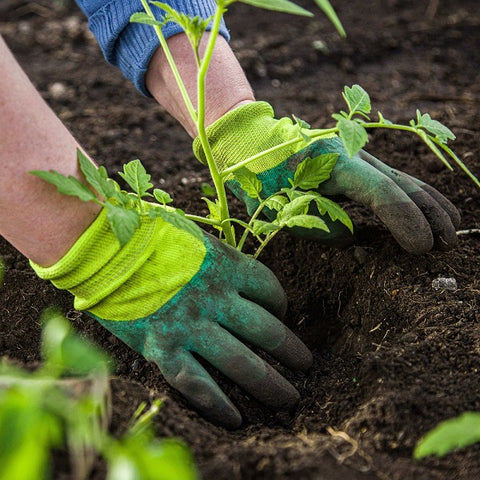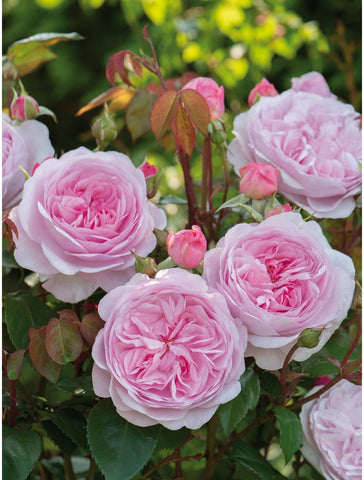If your garden is not performing well, your soil is either deficient in phosphorus or the plants are unable to absorb it. Excessive fertilization, runoff, leaching, excessive acidity, soil compaction, herbicide damage, and insect pressure can all lead to poor phosphorus absorption. For these cases, you need to know how to add phosphorus to the soil. The following content also has some reference value for raised garden beds.
The fastest way to increase available phosphorus is to apply a fertilizer with a higher ratio of NPK, such as 10-20-5. However, if plant uptake is the underlying cause, adding conditioners to release phosphorus bound in the soil is more effective and less likely to cause a buildup of other problems. In some cases, the best treatment may be a combination of both. Soil testing can pinpoint the cause and help you choose the best way to correct the problem.

What does phosphorus do to soil?
Phosphorus is one of the three elements necessary for the growth of all plants. Like nitrogen and potassium, phosphorus is the P in the NPK formula on garden fertilizer labels. It provides secondary minerals that support the absorption of nutrients required for early root growth, plant cell and seed development, cold resistance and efficient use of water. It supports photosynthesis and helps make the chlorophyll that gives the leaves their green color.
Phosphorus is a naturally occurring element in all soils, but not always in a form that allows plants to use it. Signs of phosphorus deficiency include stunted growth, weak stems, dead, yellow or reddish-purple leaves, small or misshapen flowers, and poor harvests.
Here are eight ways to increase available phosphorus and improve the performance of plants in your garden.
01 High phosphorus fertilizer
Commercial fertilizers that contain a higher proportion of phosphorus can be released immediately for uptake by plants and can be labeled as flowering promoters or flowering promoters. They can be liquid, granules or foliar sprays that can quickly bloom on vegetables, fruits and ornamentals. Commercial fertilizers run out quickly, and repeated application can harm the plant's salt accumulation and affect pH balance. Applied in the fall, available phosphorus can remain in the soil for up to 6 months.
02 Animal Manure
All fertilizers add phosphorus to the soil, but in relatively small amounts. Chicken manure and horse manure have the highest salt content, with about 80% immediately absorbed by the soil. Fresh feces contains pathogens and loses some of its nutritional value due to aging. Nevertheless, composting using high temperature and mature fertilizer is the safest option for food crops. It can also be sown in autumn and sown in spring.
03 Bone meal
Bone meal is an organic fertilizer that can feed plants for one to four months, and bone meal is a fine or coarse powder ground from animal bones and animal processing waste. It contains a large amount of phosphorus, up to 12 to 24 percent, which is immediately available to plants. It is usually applied once a year at the time of planting, but it is also possible to increase the phosphorus content of individual plants or crops by fertilizing and watering them. It breaks down best in soils that are balanced to slightly acidic.

04 Fish milk
When used as a leaf spray, fish emulsion can rapidly increase the phosphorus content of plants. This is an organic fertilizer made from whole fish and fishery by-products. It works quickly but also runs out quickly and can be used on a consistent schedule throughout the growing season. Unlike commercial formulations, fish emulsions do not cause harmful salts to build up in the soil.
05 worm casting
Vermicompost compost is an organic soil amendment that adds some phosphorus to the soil, but more importantly, it releases existing phosphorus. If your soil test results show adequate phosphorus levels, but your garden is struggling, worm castings can help eliminate malabsorption problems. This is a special organic soil conditioner that contains a lot of micronutrients, but it requires special materials and equipment, and commercially sold products can be expensive.
06 Composting
Compost is a soil conditioner consisting of partially decomposed organic material that is then added to the soil. It can be used before, after or while planting, and work through tillage or digging. Compost replaces depleted nitrogen, phosphorus, potassium, and secondary minerals and nutrients, however, very little phosphorus is immediately available to plants. This makes composting a continuous soil performance improvement practice that benefits the most from repeated application each year.
07 lime
Phosphorus breaks down best in soils with an equilibrium pH of 7 to 7.5. Acidic soil binds it and prevents plants from using it. When soil test results indicate high acidity, garden lime can balance pH and release phosphorus that was previously unavailable. It consists of granular limestone or dolomite and contains high concentrations of calcium and magnesium. Apply lime once before planting.
08 phosphate rock
Phosphate rock is mined rock with a high phosphorus content. Basalt, granite and rhyolite are examples of such rocks. Soft rock phosphate is a powdery substance added to the soil when it is planted. Phosphate rock is also widely used as a decorative covering. This is a slow form of release that takes up to five years to fully break down.

FAQ
What is the fastest way to increase phosphorus in soil?
Commercial fertilizers, composts and foliar fish milk with high NPK ratio can rapidly increase available phosphorus.
What is a good source of plant phosphorus?
Chicken manure and horse manure, bone meal, fish emulsion and phosphate ore are all good sources of plant phosphorus. A fertilizer with a higher second digit, such as 10-20-5, can quickly add phosphorus to plants.
Does Epsom salt contain phosphorus?
Epsom salts do not contain any of the essential elements needed by plants; Nitrogen, phosphorus or potassium. It is composed of magnesium, sulfur and oxygen.









